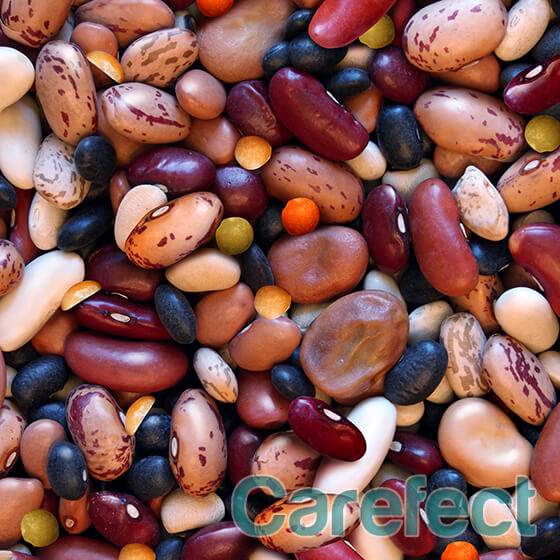Fiber is an important nutritional factor for maintaining a healthy digestive system. Fiber is a complex carbohydrate that is found primarily in plant-based foods. There are two different types of fiber that have important roles and help your digestive system. Soluble fiber is fiber that absorbs water which provides bulk to your stool and helps it pass more easily through your digestive tract. Insoluble fiber remains unchanged as you digest it which helps the contents move more naturally through your body. Fiber is critical for keeping your bowel movements regular and for maintaining a healthy routine. Fiber can be especially important because the lack of fiber can lead to increased constipation as well as a host of other stomach-related problems. As you age, you require increased fiber in your diet in order to ensure that your digestive system is running smoothly. Fiber helps improve your digestion and lessens the impact of other stomach-based health concerns which include high cholesterol levels, high blood sugar levels, and constipation. Most seniors are not ingesting enough fiber in their diets as men over 51 need 28 grams of fiber and women of the same age need 23 grams each day.
How to Intake More Fiber
Increasing your fiber intake can be a great way to have a more regular bowel movement but it is important to take it slow because eating too much fiber all in one can result in stomach pain due to the nature of how fiber is digested. It is more important for fiber to be ingested in smaller quantities and more often than it is all at once. Try adding at least one fiber rich food to each meal so you can enjoy the benefits. Creating a healthy habit that you can commit is important when taking care of your body. You can create a list of fiber rich food to add to every meal in order to add them with more ease. While fiber is important in assuring that your bowels are moving contents through your body effectively, without drinking enough water it can be difficult to pass the contents of your bowels. A good way to combat that is to have a glass of water with every meal. The following are some fiber rich food:
Fruits and Vegetables
You should ideally be eating five servings of fruits and vegetables a day because they are rich in nutritional benefits including vitamins, minerals as well as fiber. Fiber-rich fruits and vegetables are usually fresh rather than preserved and include the peel because the peel adds extra fiber to the serving size. Including fruits and vegetables in all of your meals can be a great way of including fiber in a way that is tasty and includes added benefits. Try adding fresh fruit to your dessert by enjoying berries and ice cream. Another option is drinking smoothies rather than juice because the peels and the flesh of the fruit are where most of the fiber is. Adding fruits to your food can be a tasty way of including fiber by including dried fruit in your baking or fresh fruits in your cereals and oatmeal. Try and include a vegetable wherever you can, whether that is through including it into your main meal or adding a side salad or bed of vegetables.
Grains
Grains may be what you think about when you consider adding fiber to your meals. One cup of whole grains at each meal can be a great start when increasing your fiber intake. It also helps that grains are often more accessible financially than fresh fruit and vegetables. It is often easier to get your daily dose of fiber in when adding a cup of rice or oatmeal to your meals because grains are easy to cook as well as easy to store long-term. Fresh fruit and vegetables can go bad very quickly so having preserved food or food that is easy to keep on the shelf can be an accessible way to increase your fiber intake. When choosing a grain, consider what you like to eat as well as the nutritional facts to see how much fiber is in each serving. Ideally, you want to have at least 5 grams of fiber per serving. This means choosing brown rice and whole wheat bread and whole grains over processed grains.
Legumes and Beans
Beans are not just good for your heart! Legumes of all types pack a lot of fiber and protein per serving. A cup of beans can add up to 14 grams of fiber per serving size. Adding beans to your pasta, salad and stews can really increase your daily intake of fiber and protein. Grains and fruits and vegetables are much easier to add to a meal than beans can seem, so it may be beneficial to choose a family favourite recipe that is packed with beans and make that once a week. Ever heard of Taco Tuesday? Try including a hearty amount of black beans to your weekly Tex-Mex night!
Fiber is an important nutrient that adds a lot of value to your overall health because the elimination of the contents of your bowels is a great way of keeping you happy and healthy. Luckily, fiber is in many of the food items we already eat, so try and increase the serving size or add more fiber-rich foods to each of your meals in order to increase the efficiency of your digestive tract. Ensure that you are drinking an adequate amount of water, at least one cup at every meal, in order to keep things moving smoothly to decrease constipation and increase bowel efficiency.
If you enjoyed this article, we also recommend these related posts in our Home Care Services blog:

